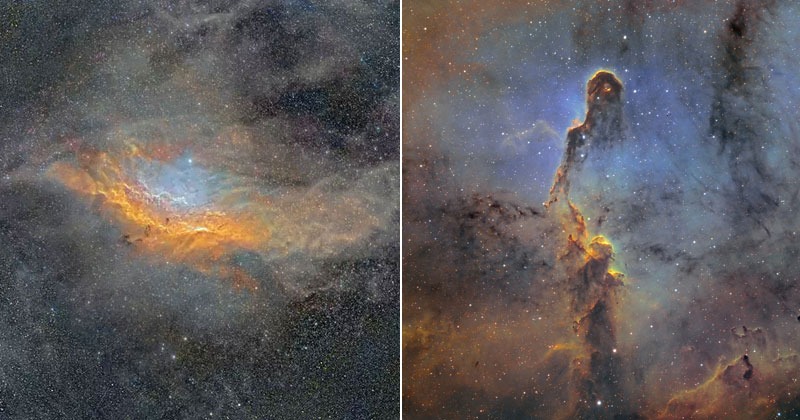What have you done in the last 12 years? It could be plenty of things, but nothing as fascinating as this ridiculously, amazing and breathtaking Milky Way galaxy image by a Finnish photographer JP Metsavainio.
Metsavainio, a Finnish photographer, has released a Milky Way panorama on social media unlike anything you have seen from NASA or any other space telescope. Especially given that the amazing Milky Way picture took him 12 years and 1,250 hours of photography to create.
According to PetaPixel, the photo spans 125 degrees from the sky and shows about 20 million visible stars. The result is a form of galactic art exhibit comprising of stars, gases and dust in a shimmering display of some of the greatest forces in the known universe.
Take a look at some of the Milky Way that took over 1,000 hours and 12 years to collate, something that star gazers and art enthusiasts would equally appreciate:
Began shooting in 2009 – According to a PetaPixel report, Metsavainio began shooting the project back in 2009 with astronomy accessories and high-end camera equipment. 20 million visible stars – The photo spans 125 degrees of the sky, from Taurus to Cygnus, and shows about 20 million visible stars. Ou4, The Giant Squid – The giant Squid Nebula cataloged as Ou4. Nebula was discovered in 2011 by French Astro-imager Nicola… Read MoreThe giant Squid Nebula cataloged as Ou4. Nebula was discovered in 2011 by French Astro-imager Nicolas Outters, the Squid Nebula’s alluring bipolar shape is distinguished here by the telltale blue-green emission from doubly ionized oxygen atoms. The true distance and nature of the Squid Nebula have been difficult to determine. Still, a recent investigation suggests Ou4 really does lie within Sh2-129 some 2,300 light-years away.Read Less The California Nebula – The California Nebula also called NGC 1499 and it can be seen at the bottom left corner on the large mosaic image.Sharpless 124 & Cocoon nebula – A closeup from the main image shows the Sharpless 124 at up and the Cocoon nebula with a dark gas stream at bottom. Sharpless 132 – Sharpless 132 is a very faint emission type nebula on the Cepheus/Lacerta border. When Metsavainio shot the photo Sh2-132 locates at the border of Cepheus and Lacerta at a distance of about 10 000 light-years from the earth. The Tulip NebulaSharpless 101 is a H II region emission nebula located in the constellation Cygnus. It is sometimes also called the Tulip Nebula because it appears to resemble the outline of a tulip when imaged photographically. From the Bubble to the CaveBlown by the wind from a massive star, this interstellar apparition has a surprisingly familiar shap… Read MoreBlown by the wind from a massive star, this interstellar apparition has a surprisingly familiar shape. Cataloged as NGC 7635, it is also known simply as The Bubble Nebula. The Bubble Nebula, around 11,000 light years from Earth.
Sh2-155 is a diffuse nebula in the constellation Cepheus, within a larger nebula complex containing emission, reflection, and dark nebulosity. It is widely known as the Cave Nebula, which is relatively close at only 2,400 light years from Earth.
Read LessCygnus ConstellationCygnus is one of the most recognizable constellations of the northern summer and autumn. It contains one of the brightest stars in the night sky called Deneb.Reason -"The reason for a long time period is naturally the size of the mosaic and the fact that the image i… Read More“The reason for a long time period is naturally the size of the mosaic and the fact that the image is very deep. Another reason is that I have shot most of the mosaic frames as individual compositions and published them as independent artworks.,” Metsavainio wrote on his blog. “Read Less

